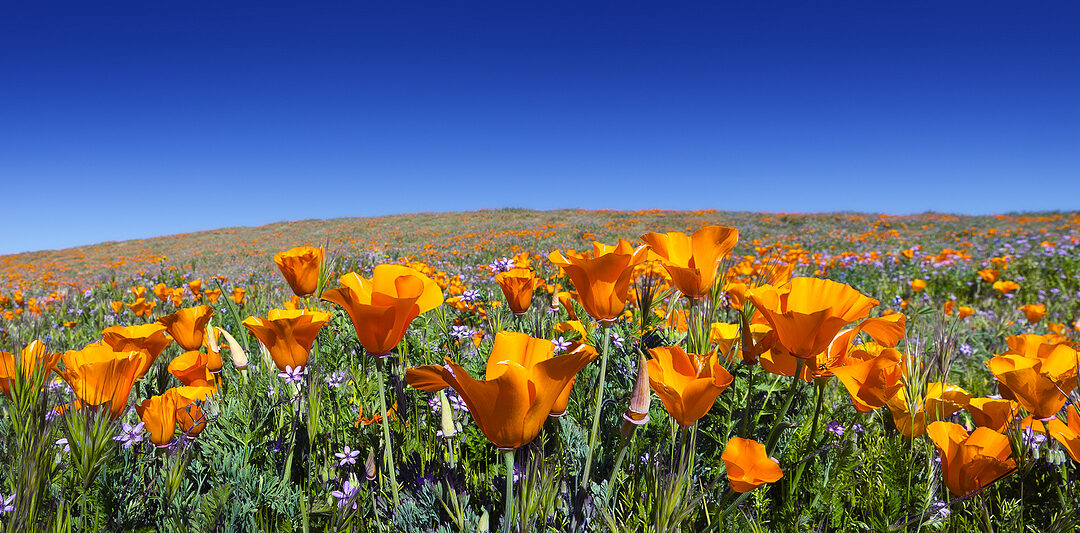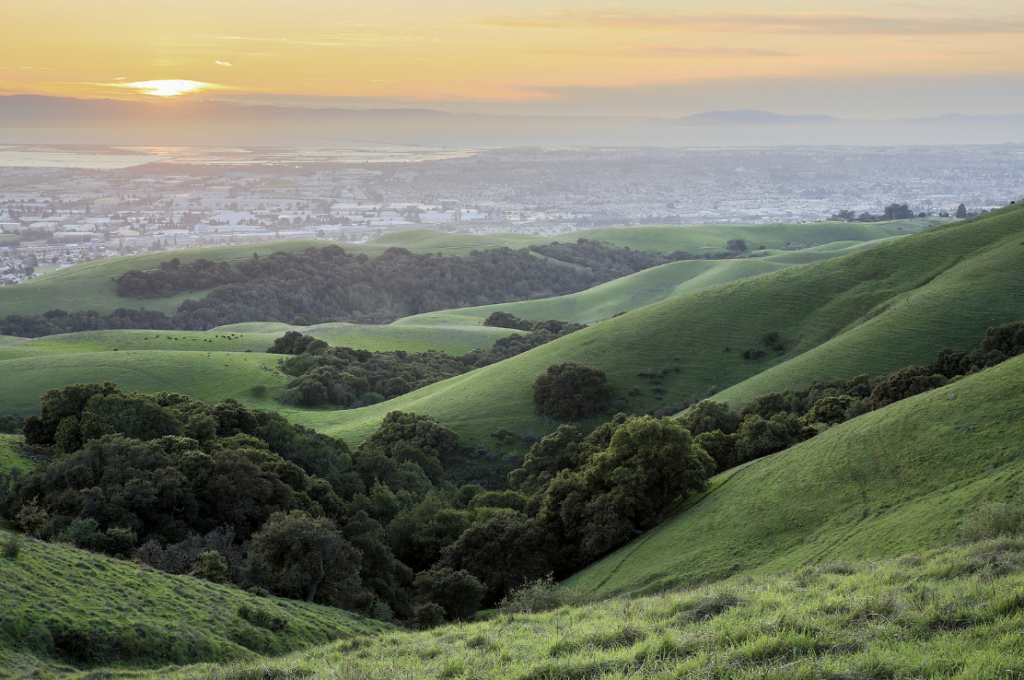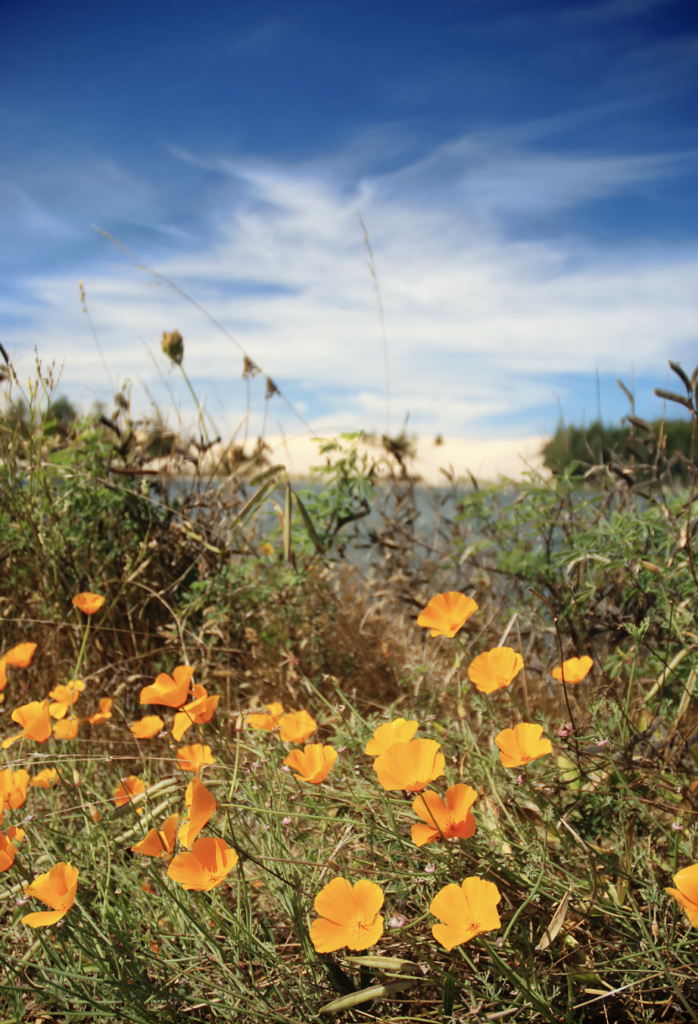“In some Native languages the term for plants translates to ‘those who take care of us.’”
— Robin Wall Kimmerer, Braiding Sweetgrass
If you’re reading this, you are likely a Bay Area landscaper who is blessed to call this area home, and you already know that we exist in a richly diverse landscape of native plants that have adapted brilliantly to the local soil, climate, and geography. There’s lots to love about native plants:
- They provide habitat and food for our native animals birds, bees, butterflies, and other insects.
- They are resilient to drought, fire, pests, and diseases, and can help prevent soil erosion and water pollution. Native plants require less maintenance and conserve water use as well, as they do not need to be watered nearly as often as non-native species.
- They reflect the natural beauty and history of the region, and offer a variety of colors, shapes, textures, and stories for landscaping and gardening.
Our local biome includes some fantastically rare and endemic species, such as the Franciscan manzanita, the Presidio clarkia, and the Tiburon mariposa lily, which looks a little bit like the seeds fell from space, but is native to the Bay Area.
Incorporating lots of native plants into a Bay Area landscape design is a beautiful way to help restore air quality and ensure proper soil retention in your local environment, since these are the plants that have evolved with and have the power to restorate balance to the land where they grow. We’re excited to tell you a little bit about some of our favorite native plants with these superpowers, and when you’re ready to plan your own Bay Area landscape design, schedule a consultation.
Contents
California Buckeye (Aesculus californica)
Known for its beautiful white flowers, California Buckeye is a drought-tolerant tree that helps stabilize soil and provides low-canopy shade and habitat for our local wildlife, while being deer-resistant. It has gorgeous white or pink flowers that bloom in spring and attract butterflies, moths, and other pollinators.
California Buckeye puts out her new leaves in early winter, drops it’s leaves in the summer and is dormant come fall. This tree is strong, and can tolerate a variety of different kids of soil, including clay and serpentine soils that are rich in metamorphic derivative rocks such as serpentinite.
Coyote Ceanothus (Ceanothus ferrisiae)
This rare and endangered shrub is native to Santa Clara County and plays a crucial role in supporting local ecosystems. An evergreen shrub with dark green leaves and white flowers that bloom in Springtime, it thrives in nutrient-poor serpentine soils and contributes greatly to the soil retention where it grows, and can tolerate drought and frost.
Historically, Coyote Ceanothus has been an important cultural resource for several Native American tribes, including the Cahuilla, the Mohave, the Hopi, and the Zuni, who have used it for making baskets, cradles, teas, and medicines. By planting Coyote Ceanothus in your garden, you can help conserve this unique species and support its recovery in the wild. Moreover, you can also improve the soil retention and stability of your garden, as Coyote Ceanothus has deep roots that help prevent erosion and runoff.
California Goldenrod (Solidago californica)
This vibrant perennial native attracts pollinators with bursts of bright yellow flowers. Goldenrod thrives in open, grassy areas, and is native to Western North America, from Oregon to Baja, CA from elevations ranging from sea level to 7,500 feet. In short, she’s flexible and easy to please, and a great choice for a native garden.
California Goldenrod is helpful in preventing soil erosion like many natives, but it’s also one of the best things to plant to support the native bee and butterfly populations. The plant prefers wet conditions during winter and spring, and appreciates drier conditions in the summer, but is tolerant of extra water.
Douglas’ Stitchwort (Minuartia douglasii)
A delicate white-flowered plant, Douglas’ Stitchwort is easy to cultivate and can aid in soil stabilization. Found in the chaparral and oak woodlands of California, Southern Oregon and some parts of Arizona, this petite herbaceous perennial beauty has deep roots in the ecology of our region.
Douglas’ Stitchwort dainty blooms arrive in spring and last beautifully through early summer; they provide a crucial food source for pollinators, require very minimal care, and thrive in a range of conditions, from full-sun to dappled shade. Once the flowers are gone for the season, the plant’s slender stems and glossy leaves remain a beautiful part of any Bay Area landscaping plan.
Bladder Parsnip (Lomatium utriculatum)
Although lesser-known, this native perennial herb is a member of the carrot family, and historically grew abundantly in many parts of North America. Called “Spring Gold” by some, the plant’s yellow flowers bloom in late winter and early spring, and attract many pollinators, notably the Anise Swallowtail butterfly, whose caterpillars quite prefer to feed on the plant’s leaves.
The name Bladder Parsnip may be a bit discouraging to the appetite, but this plant has a long local history as both food and medicine by the native groups of this land, many of whom also ate the fresh leaves raw. It can be cultivated for these uses, or simply combined with other native plants such as tidy tips, goldfields, Douglas’ Stitchwort and the California Poppy, to create a colorful and fragrant backyard meadow.
California Poppy (Eschscholzia californica)
The iconic state flower is not only a beautiful addition to a native garden, but also contributes to soil health and stability. The edible flowers of the plant can be red, orange, yellow, and rarely pink and white varieties are seen. The petals close at night, or if the weather becomes cold,windy, or cloudy.
The California Poppy is self-seeding, and quite easy to cultivate. The plant stays in bloom from February to September, and provides long-lasting color to a Bay Area landscaping design. And if you suffer from flower allergies, California Poppy is a great choice — since these flowers are not wind-pollinated, their pollen does not become airborne.
Native Gardens Help Our Earth Heal
We know it’s true — native species supports local ecosystems, benefits wildlife, and promotes a healthier environment. There is so much we can do with the piece of land we have, to create beauty and help contribute to a future with a healthy, balanced ecosystem. When you’re ready to plan your native garden, we’re excited to help!



